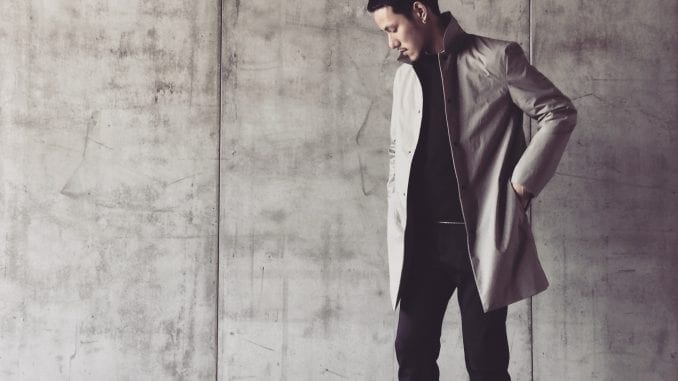
We play around with Chad Wang’s World Brewers Cup Recipe
Find out more about the recipe that won third place for the Taiwanese champion in the 2016 World Brewers Cup
BY JOSHUA DUSK-PEEBLES
SPECIAL TO BARISTA MAGAZINE
In our carefully considered world of specialty coffee, wetting a filter before brewing is standard operating procedure. Depending on the barista and the brewing device, 50 to 100 grams of water will travel through the filter to rinse away any unwanted paper flavors while also pre-heating the brewer. Chad Wang turned both of these concepts upside down on his way to taking the bronze kettle ”that’s third-place, folks ”at the 2016 World Brewers Cup held in Dublin, Ireland, this past June. He rinsed his filters with 300 grams of water ”and then waited 10 minutes before brewing!

There is a real temptation to dismiss Chad’s œsuper-rinse as pure overkill. I myself was a bit skeptical until I spoke to him and realized that he is a man of great detailed intention. Chad did not win third place because he brews haphazardly, and it would be indeed be careless to dismiss his methods without truly considering them. Skepticism is the starting point of good science but is only useful if the skeptic is willing to engage enough learn something and/or be proven wrong. Luckily, either way, experimenting with coffee means getting to drink coffee.

On that note, first things first. Here are the complete details of Chad’s recipe, confirmed, brewed, tasted, and double-checked with the man himself:
THE RECIPE:
- Heat filtered water to 197 °F
- Place an original Hario white paper filter in the v60 and rinse it with 300g water
- Grind coffee medium fine (Chad did between 4.5 “5.5 on a Ditting KR804, and I did between 16 “18 on a Baratza Encore)
- Place 15g ground coffee in the v60 and shake brewer once to level it
- Ensure brewer and filter are room temperature
- Start a timer and spiral pour 50g water in 5 seconds
- At :30 spiral pour (over whole bloom once) then center pour 70g (to 120g) in 15 seconds
- At :52 center pour 60g (to 180g) in 15 seconds
- At 1:15 center pour 70g (to 250g total) in 15 seconds
- At 1:55-2:10 remove the v60 (depending on the roast)

THE EXPERIMENT:
- Use scotch tape to label the bottoms of 4 identical cups- œnone, œnormal, œheavy, and œsuper
- Put a filter in the v60 and make sure the seam is folded over so that it fits snugly
- Set the brewer on the cup labelled œnone
- Spiral pour 100g cold water over the filter
- Move the brewer to the cup labelled œnormal
- Spiral pour 100g more water over the same filter
- Move the brewer to the cup labelled œheavy
- Spiral pour 100g more water over the filter
- Move the brewer to the cup labelled œsuper
- Spiral pour 100g more water over the filter
- Move the brewer to your favorite coffee mug
- Use the well rinsed filter to brew a cup of coffee using Chad’s method (but don’t drink it yet!)
- Mix up the 4 cups of water to ensure a blind tasting
Now taste!
The most obvious thing you will be looking for is paper flavor. But there are other flavors and sensations that will be present, as well. Intense astingency, tinniness, grassiness, and sweetness all showed up during my experiments. The fact that we use these flavors and sensations to evaluate proper extraction is significant ”an insufficiently rinsed filter might cause a careful coffee brewer to mistakenly think they need to change their brew recipe.
As you are tasting, be sure to take notes and try to put the cups into the proper order a few times, even if you get it right the first time. Regardless of whether or not you decide to change the way you rinse your filters, forcing yourself to blindly correlate flavors will make you a better coffee brewer.
Now you can drink that coffee! As you do so, pay special attention to the brightness and the aroma. Chad’s œsuper-rinse was designed to accentuate these particular features. I did find that to be the case with the Sweet Bloom Gersi Kebele Yirgacheffe I was brewing. See what you think with your coffee!

WHAT ELSE I LEARNED ALONG THE WAY:
- The flow rate of different filters can be very different. Using Bonmac filters increased my brew time by more than 30 seconds. With some recipes, that might be a good thing. With this recipe, it was not.
- Water sent through a brown filter tastes more like paper than water poured over a literal piece of paper, even after rinsing it first.

ABOUT THE AUTHOR
Joshua Dusk-Peebles is a lifelong explorer, experimenter, and learner. He enjoys nothing more than sharing what he is learning with other people. When he was young, he would get legitimately angry if his dad forgot to let him smell the coffee every time a new bag was opened. Unfortunately, the much less pleasant corresponding beverage kept him away from coffee until his 30s, when he smelled and then tasted a well-handled natural process Ethiopia Yirgacheffe, and everything made sense again. He plans on getting his own new-born son started much sooner. He can be reached at dusk.peebles@yahoo.com



Very interesting, it seems like Chad Wang’s recipe is very expertly crafted and can make a distinctive brew, but only if you have all the same equipment and tools as him, particularly the filter. Really interesting experiment nevertheless, I bet if done well you can really see the influence of Wang’s methods in action, I’m curious what notes of flavour and brightness come through the most at the heavy and super stages.